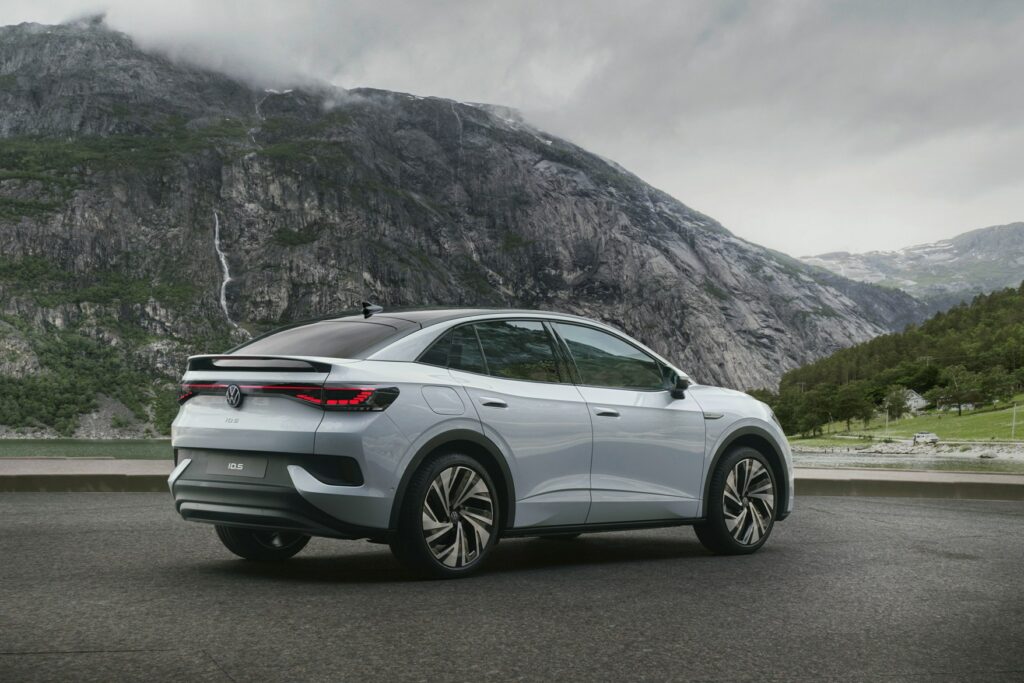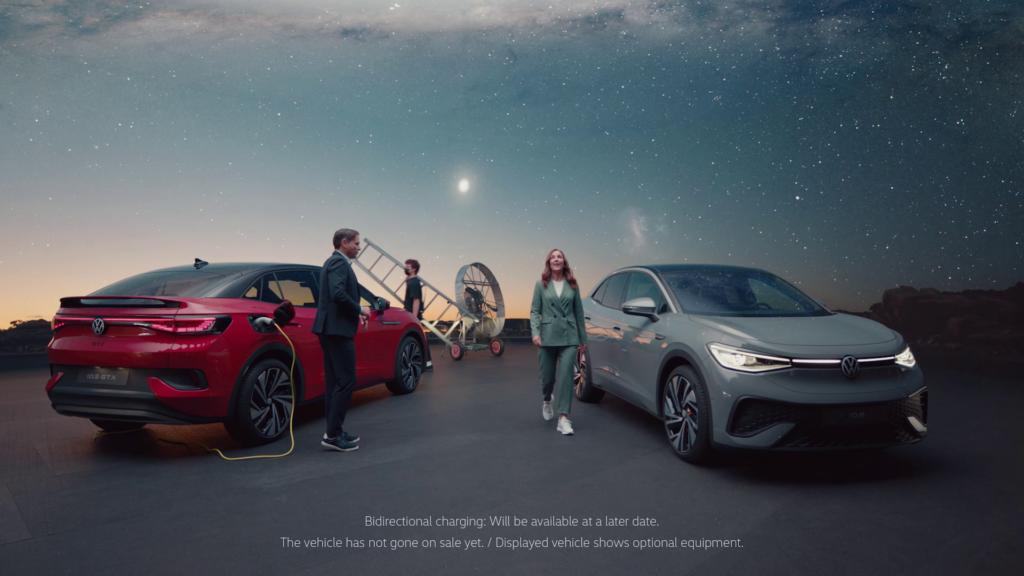Earlier today Volkswagen announced the “world premiere” of the ID.5 “electric SUV coupé” and the ID.5 GTX. According to the press release:
On the “Way to ZERO”: The new ID.5 does more than just expand the successful ID. family; the new Volkswagen launch moves the electrification of its new car fleet forward and into a new market segment. The elegant, expressive E-SUV coupé is equipped with the new ID. software version 3.0, which includes improved charging performance and voice control among other features. With the use of swarm data and latest-generation driver assistance systems, Volkswagen is also taking the next step towards automated driving…
Elegant and dynamic design, outstanding aerodynamics, extensive range. The new ID.5 and the sporty ID.5 GTX with dual-motor all-wheel drive are the new, long-range top models in the ID. family. Like all ID. models, Volkswagen’s first e-SUV coupé is based on the Volkswagen modular electric drive matrix (MEB).

Our interest is of course primarily in the (dis)charging capabilities of the new VW. We carefully selected a promotional picture that includes the charging port, albeit with the door closed. The press release states that:
With its We Charge charging system, Volkswagen offers the fastest-growing environmentally friendly system for convenient, networked and sustainable charging. The network has around 250,000 charging points across Europe. Using the standard Mode 3 cable, the e-SUV coupé can also be charged with up to 11 kW of alternating current (AC), even when it is out and about. Charging performance can reach up to 135 kW as standard at a fast-charge station.
However despite VW’s earlier hints, the press release makes no mention of any potential ability to discharge the ID.5’s traction battery! For that we have to turn to the launch video:
At 7:35 in the video Klaus Zellmer puts it this way:
We lost power, and in order to keep the lights on we now use the ID, with its battery, and it’s called bidirectional charging…
In your usual use case you would use the electricity from the grid, use it for your car to power the battery and drive around. But it can also be done the other way around, so you can also use the battery power, the electricity, to power whatever you want to power.
There’s no mention of the word “grid” however, so let’s settle on vehicle-to-load (V2L for short) for the moment shall we? Also be sure to read the (very) small print:

There is one other interesting technical feature of the ID.5 that does gets a mention in the press release:
With Car2X communication, Volkswagen is taking safety to a whole new level. Data from compatible vehicles in the Volkswagen fleet and signals from infrastructure within a radius of up to 800 metres can be locally interpreted in a fraction of a second, enabling driver alerts about dangerous areas, accidents and stationary traffic.
Add vehicle-to-infrastructure using WLANp to the ID.5’s list of capabilities as well!

In a press release earlier today Volkswagen announced that:
Two things in particular are of note:
1) In the arcane world of international smart grid standards a “Home Energy Management System” is referred to as a “Customer Energy Manager“, or CEM for short.
2) The press release specifically mentions “A special DC BiDi wallbox”. Here is one from our BiDi wallbox catalogue:
Whilst it’s hard to be certain, based on recent VW press releases it looks as though entry level IDs will support AC V2L/V2H, while the versions with bigger batteries will also support DC V2G